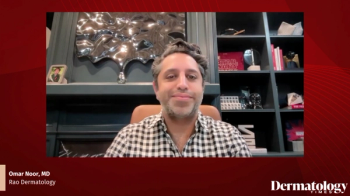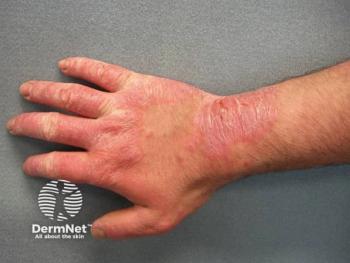
Insights on Pathology, Biopsy, and Patient Understanding
Key Takeaways
- Pathology is an interpretive process requiring strong communication between dermatologists and pathologists for accurate diagnosis and patient care.
- Proper biopsy technique is crucial, with a minimum size of 3 mm recommended for reliable tissue analysis.
Ata Moshiri, MD, MPH, FAAD, spoke about pathology interpretation and patient communication at Elevate-Derm Summer 2025, enhancing skin cancer diagnosis.
Ata Moshiri, MD, MPH, FAAD, assistant professor of dermatology and dermatopathology at NYU Langone in New York City, shared key insights from 2 sessions he led at the
In his session, “Understanding Pathology Results,” Moshiri emphasized that pathology is not an absolute truth but an informed interpretation based on tissue patterns.1 Just as clinical notes vary by clinician, pathology reports can differ between pathologists. He stressed the importance of strong communication between dermatologists and pathologists to ensure accurate diagnosis and patient care.
“We're a team, we're in it together, trying to make the most that we can for the patients, their specimens, and their diagnosis,” Moshiri advised. “So if you ever get a report that doesn't make sense, don't hesitate to pick up the phone [and] call the pathologist.”
Another major takeaway was the value of proper biopsy technique. Selecting the right lesion and using an appropriate biopsy method—such as a punch over a shave for deeper or widespread rashes—is essential. Additionally, he advised against overly small biopsies, advocating for a minimum of 3 mm to ensure enough tissue is available for reliable analysis.
In his second session, “A Dermatopathologist’s Guide to Patient Conversations,” Moshiri addressed the often-confusing landscape of atypical melanocytic lesions.2 He highlighted the need to simplify pathology reports for clearer clinical action. He endorsed the MPATH-Dx framework, which categorizes nevi into low-grade and high-grade, as a useful tool for standardizing care. This shift moves the field away from outdated terms like “dysplastic nevus,” which inaccurately suggest a premalignant nature. Instead, Moshiri emphasized using molecular insights to guide evidence-based decision-making and patient messaging.
Throughout both sessions, Moshiri underscored a central theme: pathology is a collaborative, interpretive process that benefits from clear dialogue, thoughtful biopsy practices, and a unified clinical language.
References
1. Moshiri, A. Understanding Pathology Results. Presented at: 2025 Elevate-Derm Summer Conference; July 24-28; Park City, UT.
2. Moshiri, A. A Dermatopathologist’s Guide to Patient Conversations. Presented at: 2025 Elevate-Derm Summer Conference; July 24-28; Park City, UT.
Newsletter
Like what you’re reading? Subscribe to Dermatology Times for weekly updates on therapies, innovations, and real-world practice tips.



















